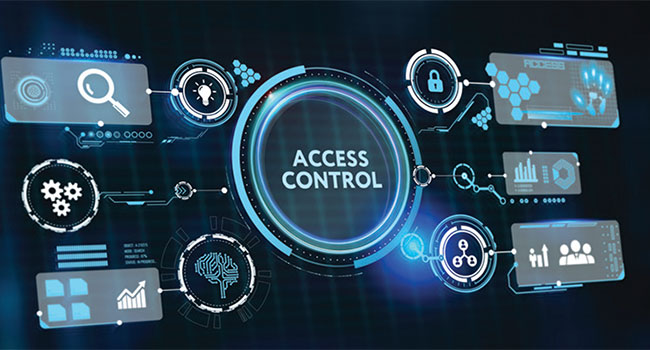
Shaping the Industry
5 trends in innovative access control
- By Robert Martens
- Nov 27, 2023
Access control solutions are undergoing a rapid evolution, accompanied by the emergence of transformative trends that are revolutionizing the management of security and access across diverse spaces such as homes, offices, and institutions.
Access control is a critical component of a layered security solution. It helps ensure only authorized individuals are allowed access to specific locations or information. Over the years, access control has risen from simple locks and keys to a more sophisticated, dynamic marketplace evolving with biometric authentication, cloud computing and artificial intelligence. Given the rapid advancements in innovation, it is important to examine the exciting trends that are shaping the future trajectory of access control.
Control vs. trust: The shift to cloud-based solutions. One significant trend in access control is the increasing shift from on-prem to cloud-based solutions. On-prem solutions offer more direct control, consistency and stability over security and costs but may be complex, expensive and time-consuming to manage.
Cloud-based solutions, on the other hand, can be facilitated and serviced by trusted third-party providers, which can reduce expenses and simplify management depending on the scope of needs and fluctuation in costs. They also allow for heightened dynamism, flexibility, and scalability.
With pros and cons to both, the choice between cloud and on-prem solutions depends on the organization's security needs, future expectations, and budget.
Specialization of access control by vertical market. An up-and-coming trend in access control is the specialization of solutions by vertical market. Companies are tailoring their solutions to meet the unique needs of specific industries. For example, healthcare facilities have different security requirements than educational institutions. End users are fatigued by generalized technology that requires compromise of their specific experiences and necessary outcomes.
Inversely, they rightfully expect technology to anticipate and address their specific needs. This trend is driving innovation in the industry, as companies develop unique application-based features and monetization models that increase value.
Integrated intelligence: Harnessing AI and machine learning. Another significant trend in access control technology is the use of AI and machine learning (ML). These technologies are being used to identify patterns in user behavior and to enhance security measures by providing additional context for decision making based on these patterns.
For example, AI and ML algorithms can be used to analyze biometric data (such as facial recognition), gait analysis (or the way someone moves) and behavioral patterns (like where and when someone typically parks in a parking lot) to identify individuals with high accuracy. Additionally, AI/ML can recognize changing circumstances, such as environmental conditions or new user behavior, to improve the accuracy of identification.
This particular closed-loop learning system facilitates the adaptability and gradual enhancement of the access control system, providing a more secure and efficient solution over time. Biometric analyzation and phone authentication are also becoming more prevalent in access control systems, allowing for more accurate and reliable identification of users.
By combining multiple authentication types, access control systems can ramp up or lower accessibility in a number of ways, depending on the level of security required.
Full-stack solutions. Businesses are increasingly looking for complete solutions when it comes to access control technology and software. Rather than piecing together different components from various sources, companies are progressively pursuing comprehensive solutions that seamlessly integrate elements to provide value in unique ways and simplify adoption.
This trend is driving the development of full-stack solutions that are integrated with each other at the data layer, so the consumer experience is preserved across the different products and services. Full-stack solutions are still expected to be open architecture. Companies are banding together to create tailored, significant partnerships that provide a complete package.
Additionally, businesses can choose the level of integration that meets their specific needs, rather than being limited by product availability or restricted by generic solutions. One-size-fits-all solutions allow standardized implementation but can limit customers to only standard capabilities and experiences.
The increasing trend of specialization noted earlier is driving further interest in full stack solutions tailored to optimize customer experiences.
Productivity. Finally, access control technology and software are undergoing a notable shift towards prioritizing productivity enhancement. Businesses are looking for solutions that are simple, easy to use and cost effective. They want solutions that work well with other systems, such as asset management and space utilization, to improve efficiency and reduce or remove redundant tasks.
Moreover, businesses are looking for self-healing systems that can recognize and resolve issues automatically, as well as self-improving systems that can identify ways to mitigate the root cause of issues.
For instance, visitor management and access control systems are merging to create simpler, more cost-effective solutions that are easier to manage as a whole than as their individual platforms. By removing redundant tasks and streamlining processes, companies can save time and money while improving security and access control. Digital credentials are also becoming more prevalent, replacing traditional badges and hardware components.
These digital credentials can be easily extended, suspended or deleted as needed, providing greater flexibility and real-time access control. Asset and space use are yet another important factor in the future of access control technology and software. Users are looking for ways to manage equipment, reserve space and optimize productivity across multiple locations, without having to keep track of everything manually. Looking Ahead Digital transformation, the growing prevalence of AI/ML and end-user behavior are all influencing the access control industry.
They are driving innovation: from specialized solutions and full-stack integration to AI/ML technologies and productivity enhancement, there are many new developments to watch in the coming years. Integrators that adopt these trends can benefit from improved security, better user experience and increased efficiency.
Simply stated, the future of access control is exciting, and there’s no end in sight for the opportunities innovation will create.
This article originally appeared in the November / December 2023 issue of Security Today.